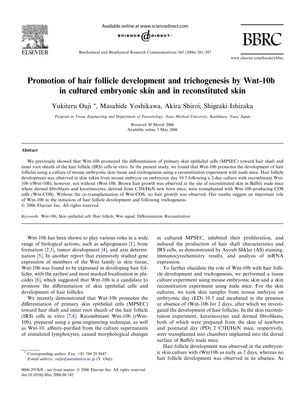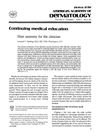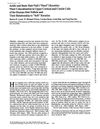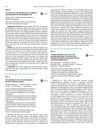Promotion of Hair Follicle Development and Trichogenesis by Wnt-10b in Cultured Embryonic Skin and Reconstituted Skin
May 2006
in “
Biochemical and Biophysical Research Communications
”

TLDR Wnt-10b is important for starting hair growth and developing hair follicles.
The 2006 study concluded that Wnt-10b significantly contributes to hair follicle development and trichogenesis. It was found that recombinant Wnt-10b (rWnt-10b) accelerated hair follicle formation in cultured embryonic mouse skin and stimulated hair growth in reconstituted skin on nude mice. Hair follicle development was evident in embryonic skin treated with rWnt-10b after 2 days, and brown hair growth was observed in reconstituted skin on Balb/c nude mice when Wnt-10b-producing cells were included in the transplant. These findings indicate that Wnt-10b is essential for the initiation of hair follicle development and hair growth.






